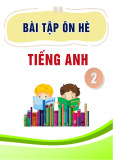
28. c. Choice ahas a misplaced modifier; the 1940s
are not also known as action painting and the
New York school. Choices band erepeat this
error. Choice dfixes the modifier problem,
but is less clear and concise than choice c.
Note that cbreaks up the material into two
sentences.
29. c. Choice acontains a faulty comparison. The
first clause tells about why the invention hap-
pened, and the second tells only the result (or
lack thereof) of the invention. Choices band e
repeat the error. In choice d, information is
added that corrects the comparison, but it is in
the wrong verb tense. The rest of the sentence
is in the past tense (invented, did not), so
makes should be made.
30. b. Choices aand duse pronouns in a confusing
way. In a,it moved incorrectly refers to the
weight of the glaciers. It makes more sense to
say the glaciers moved, not their weight moved.
In choice d, the modifier as they moved over
the land also incorrectly describes the weight
of the glaciers, and not the glaciers themselves.
Choices cand eare wordy, run-on sentences.
31. d. There is no argument posed by either sen-
tence, so choices band eare incorrect. There
is also no conclusion drawn, or example given.
The distance specified in sentence 5 is infor-
mation describing the line mentioned in sen-
tence 4.
32. a. Only sentence 1 is general enough to be a
main idea. All of the other sentences listed are
too specific.
33. a. Recall that when you are asked to add a sen-
tence, there is a poor transition in the passage
that needs improvement. In this case, sentence
15 skips to an entirely new idea. While all of
the choices acknowledge the new idea in light
of the old, only one does it with an appropri-
ate conjunction (however), and tone consis-
tent with the rest of the passage (not overly
informal).
34. c. The sentences must not only be combined
smoothly, without confusion, but must also
transition well from the previous sentence.
Sentence 7 is: The distance is more than ten
times as far. Choices dand edo not make the
transition. Choice aincludes the awkward
phrase thousands of years old ice age, and
choice buses the informal just happens to be.
35. d. This sentence is unnecessary. The meaning of
the term may be gleaned from the context of
the passage; it is awkward and intrusive to
include the definition. The suggested punctu-
ation changes are not needed, and both revi-
sions are wordier than the original.
Section 3: Multiple Choice
1. b. Wordiness is the problem with most of the
choices for this sentence. Choices aand cuse
the unnecessary phrase now that there are.
Choice dvaries the error with are here and
they have made. Choice eobscures the mean-
ing of the sentence by using the past tense was
virtually obsolete.
2. a. Choice badds a superfluous comma after
Alchemist. Choice cis grammatically sound
but wordy. Choices dand eare confusing. The
pronoun it in choice dis unnecessary, and
choice ecreates a misplaced modifier that
sounds as if the author is one of his other
books.
3. d. There are two punctuation errors in this sen-
tence. Boy Scouts is a plural noun, not a pos-
sessive one, so it does not need an apostrophe.
The word after the semicolon should be the
contraction of the words it and is, spelled it’s.
Only choice dcorrects both of these errors.
–PRACTICE TEST 2–
130

4. c. Choices a,b, and dhave faulty comparisons;
they compare books to discussions. Only
choices cand ecorrect the error, but since e
uses the unnecessary words the book,cis the
most concise.
5. e. Choice ais a sentence fragment. Adding a
comma in choice bdoes not correct the error.
The word still in choice c. conveys the correct
meaning and resolves the fragment issue, but
the lack of punctuation turns it into a run-on
sentence. In choice d, the deletion of the word
although changes the meaning of the sen-
tence. Choice edemonstrates that the addition
of a comma and removal of the word and cor-
rect the sentence.
6. a. Choice buses the wrong verb tense (the pres-
ent participle has risen instead of the simple
past rose). In choice c, the correct word
median is changed to medium. Choice delimi-
nates the comma after the introductory phrase
during the 1980s. Choice eincorrectly uses an
apostrophe in 1980s.
7. e. The problem with choice ais improper use of
the passive voice. This sentence is about
action, and it benefits from the active voice.
Choice balso uses the passive voice, and adds
a verb tense error; to ride is an irregular verb
whose simple past tense is rode, and past par-
ticiple is ridden. Choice cis illogical, and
forms a misplaced modifier with the addition
of a comma after contest. The wave didn’t take
lessons and practice. Choice dis in the active
tense, but changes the adverb successfully,
which modifies the verb rode, to an adjective
modifying the noun contest.
8. c. Choice ais unnecessarily wordy; the word very
and the construction mind of every consumer
could be eliminated or tightened. Choice b
corrects the mind of every consumer problem,
but does not remove very. Choice dincor-
rectly spells consumers without the possessive
apostrophe. Choice erepeats that error, and
introduces the unnecessary word every.
9. a. Choices b,d, and erearrange the sentence,
placing the phrase which was founded in 1916
so that it incorrectly modifies the San Diego
Zoo instead of the Zoological Society. Choice c
is correct, but not as clear and concise as
choice a.
10. d. The problem with this sentence is faulty
comparison—comparing amusement parks
with roller coasters. Choices band crepeat the
error. Choice emight be true, but that infor-
mation was not part of the original sentence.
The elimination of the semicolon also turns it
into a run-on sentence. Only choice delimi-
nates the original error without introducing a
new one.
11. b. Choice ahas a misplaced modifier. Being
obstinate as usual does not refer to the broth-
ers who are trying to change his mind, but
rather to the one whose mind they are trying
to change. With some variations, choices c
and drepeat the error. Choice ecorrects it, but
changes the verb tense to present when the
past is required (his brothers could not get).
Only choice bis correct.
12. d. Improper coordination of ideas is the problem
with choices a,b,c, and e. What is the rela-
tionship between the clauses It was supposed to
be written for the general public and the report
was so esoteric? Choices aand eincorrectly
indicate addition. Choice bindicates cause
and effect. Choices cand dboth correctly use
but, which shows there is a contrast between
the ideas, however while but then is okay in
spoken English, it is not standard written
English.
–PRACTICE TEST 2–
131

13. e. Choices a,c, and dare run-on sentences. The
correct punctuation mark for separating inde-
pendent clauses is either a semicolon or
period, not a comma. In addition, cand duse
conjunctions (because, since) that distort the
meaning of the sentence. Choice bcorrects the
run-on sentence, but adds the word affect
instead of effect, which is an error.
14. c. Choices aand bhave misplaced modifiers.
Being knowledgeable and affable refers to
teachers, not students. Choice dcorrects the
error, but the sentence is awkward and wordy
(the words about and there are unnecessary).
Choice ealso corrects the modifier problem,
but the word order confuses the meaning of
the sentence. Students won’t feel more com-
fortable with questions and problems, they’ll
feel more comfortable approaching their
teachers.
–PRACTICE TEST 2–
132

Section 1
Time: 25 minutes
Essay
Directions: In the essay, you will demonstrate how well you develop and present ideas. Your goal is to clearly use
language, firmly take a point of view, and logically advance your argument.
You must use only the space provided, which will be adequate if you pay attention to handwriting size and
margins. Avoid leaving extra space, such as through double-spacing or leaving a blank line between paragraphs.
Write legibly so the scorers of your essay can understand what you have written. You may use your test booklet
to take notes and organize your thoughts, but only what is written on the answer sheet will be scored.
There are 25 minutes in which to write your essay. Carefully read the prompt and your assignment. Respond
only to the assignment—off-topic essays will receive a zero.
CHAPTER
Practice Test 3
6
133

Assignment: Visual images have the power to inspire thought, evoke emotion, create mood, and even make polit-
ical statements. Complete the statement, and write an essay that explains your choice of image. You may choose
any image, including a family photograph, famous work of art, drawing or painting done by a friend, or even a
book illustration. Support your choice by using appropriate examples and details.
–PRACTICE TEST 3–
134
The photograph or picture that moved me the most is
.

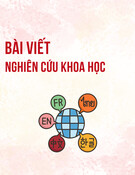
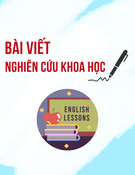



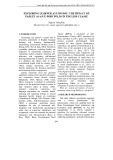
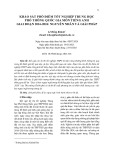
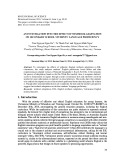
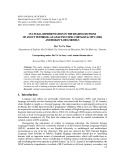
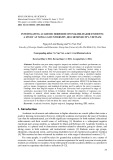
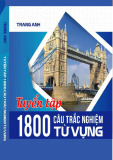
![Tài liệu Từ vựng tiếng Anh Trung cấp [mới nhất]](https://cdn.tailieu.vn/images/document/thumbnail/2025/20250913/nguyentuan250421@gmail.com/135x160/99491757910839.jpg)
![Tài liệu Từ vựng Tiếng Anh theo chủ đề [mới nhất]](https://cdn.tailieu.vn/images/document/thumbnail/2025/20250913/namdhuet@gmail.com/135x160/83251757753810.jpg)


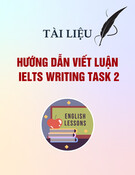
![Tài liệu Từ vựng tiếng Anh cho bé [chuẩn nhất/mới nhất]](https://cdn.tailieu.vn/images/document/thumbnail/2025/20250731/huadaithesang2509@gmail.com/135x160/18631754013896.jpg)





